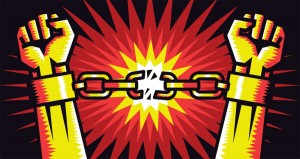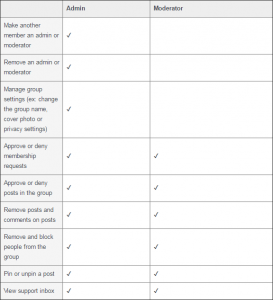If you are an email marketer, you probably know the challenge of not having enough resources to carry out a successful email marketing program. No wonder, insufficient staffing is listed as one of the top three biggest challenges that hinders the success of email marketers. Lack of resources often leads to vanilla email programs that might fail to get you the expected results. On the other hand, well-resourced email programs are more likely to be successful. For example, marketers who describe their email programs as “very well-resourced” are six times more likely than those with “adequately resourced” programs to say that their programs are “very successful”, according to Litmus’ 2018 State of Email Survey of 3000 marketers worldwide.
Owing to the bottleneck competition, mediocre email marketing is no longer an option. You should have a good team that takes care of all your email marketing needs. A well-resourced email marketing program has nearly twice as many full- and part-time employees as programs that have with less resources. As an example, brands with 100-499 employees, well-resourced email programs have 8.5 employees on average, as compared to 4.3 at less well-resourced programs. This gap in staffing is quite consistent across all company sizes, be it a small business or a huge enterprise.
Arguably, having more employees will not imply favorable results. Having the right kind of people in the right numbers will.
Advantages of Having Email Marketing Team
Apparently, there are several perks of investing in an email marketing team, as listed below:
- You will be able to build more campaigns.
- It will be possible to send them at the right time.
- The campaigns will be optimized to the target audience.
- There will be lesser scope for mistakes in the emails.
It is interesting to know that smaller, resource-strapped teams have email professionals who are responsible for 4.6 tasks on an average that range from email planning, strategization, design, and coding. If you narrow a team member’s key responsibility areas, they will be able to perform better with increased productivity. Doing so ensures minimal disruption when someone moves on to greener pastures. It also boosts the morale of the team members, which suffers in case of understaffed email teams.
How Should Your Email Marketing Team be?
Typically, companies have approximately 7-8 people in their email marketing team. It is quite possible that email teams in larger companies are backed by email agencies and freelancers who take care of ESP migration, system integration, and custom creative. The extended team of these professionals lets the team scale up their bandwidth and get talent that is difficult to acquire in-house.
Based on how skilled the team is, you can have diverse roles such as:
- Email marketing manager who takes care of execution of campaigns and programs
- Email analysts or strategist who optimizes the campaigns for best results.
- Email designers who prepare the email creative
- Email developers and QA professionals who develop and test the emails for flawless aesthetics
Let’s discuss these roles in greater detail.
-
Email Marketing Manager or Project Manager
More often than not, email marketing gets deployed at a short notice to make the most of an opportunity or challenge. To make sure that the campaigns are executed effectively, you can hire an Email Marketing Manager or Project Manager. He or she would make sure that there is no compromise in the quality of the campaigns or the timeline.
The key responsibilities are:
- Allocating resources and sharing a detailed brief with them
- Collecting the necessary assets for the campaign
- Setting the right timelines for every task
- Communicating across the different departments for the project status and roadblocks, if any
- Scheduling meetings, if needed
- Ensuring that every task is completed at the estimated timeline
-
Email strategist
Strategizing is a crucial aspect of an email program. The strategist should have a clear idea on the business of the email and the goals of the company, both short-term and long-term.
The key responsibilities include:
- Drafting an annual strategic plan related to email and make sure that it matches the objectives of the company.
- Building the quarterly plans that detail the tactics for that period of time.
- Recommendations of special projects, segmentation strategies, testing plan for optimization, and key performance indicators for targeting the right audience.
- Keeping track of the marketing calendar and ensuring that you do not send too many emails.
- Drafting content for the campaigns that include the subject lines, email copy, product to be promoted, offers to highlight, etc.
- Making sure that the email campaigns are consistent enough to execute omnichannel marketing.
-
Email Designer
Once the email strategist has rolled out the plan, the onus lies on the designer. He or she should design an email that adheres to the branding guidelines and flawless rendering irrespective of the device type and email client.
The role includes:
- Recreating the concept through design.
- Designing different versions based on the segments, languages, or renderability.
- Making sure that the designs are consistent across the diverse channels.
-
Email Production Specialist
After the approval of the concept, the email goes for development. Based on the size of your organization and marketing team, it is possible that the email designer is also the developer.
The role includes:
- Building the email HTML and in-line CSS of the email.
- Testing for rendering across multiple email clients and ISPs.
- Performing QA testing.
-
QA Professionals
It is crucial to make sure that your emails look “good” on every email client before deployment. Emails are different from websites in that an error on website can be rectified as soon as it is noticed. With strict execution of anti-spam rules like CAN-SPAM and GDPR, you should pay special attention to the dynamic elements of an email. Larger organizations would have a dedicated Quality Assurance professional, but if not, you should have someone to take care of it before every deployment.
The role includes:
- Thorough testing of the campaigns for proper rendering, copy, segmentation, and dynamic sections.
- Documentation of the performance of the email campaign.
- Recognizing opportunities and suggesting solutions to streamline the processes and minimize human error.
Wrapping Up
It is a common observation that many companies have a resource crunch with the campaign manager taking care of email strategy, quality assurance, data analytics, and project management. However, it is always better to have the right pool of talent to get the most out of your email campaigns.
Digital & Social Articles on Business 2 Community
(22)



